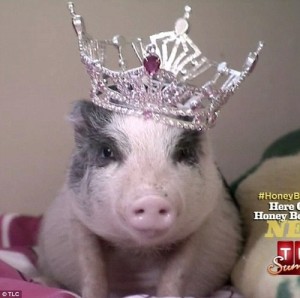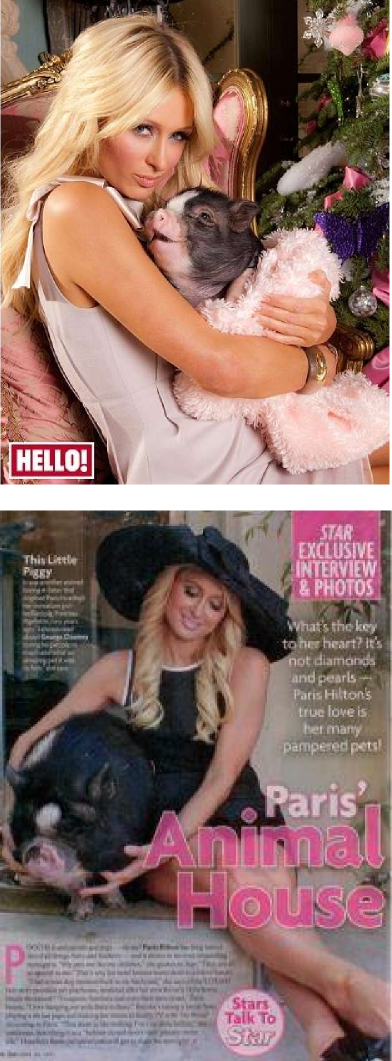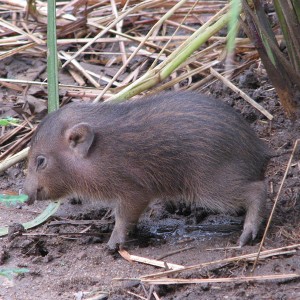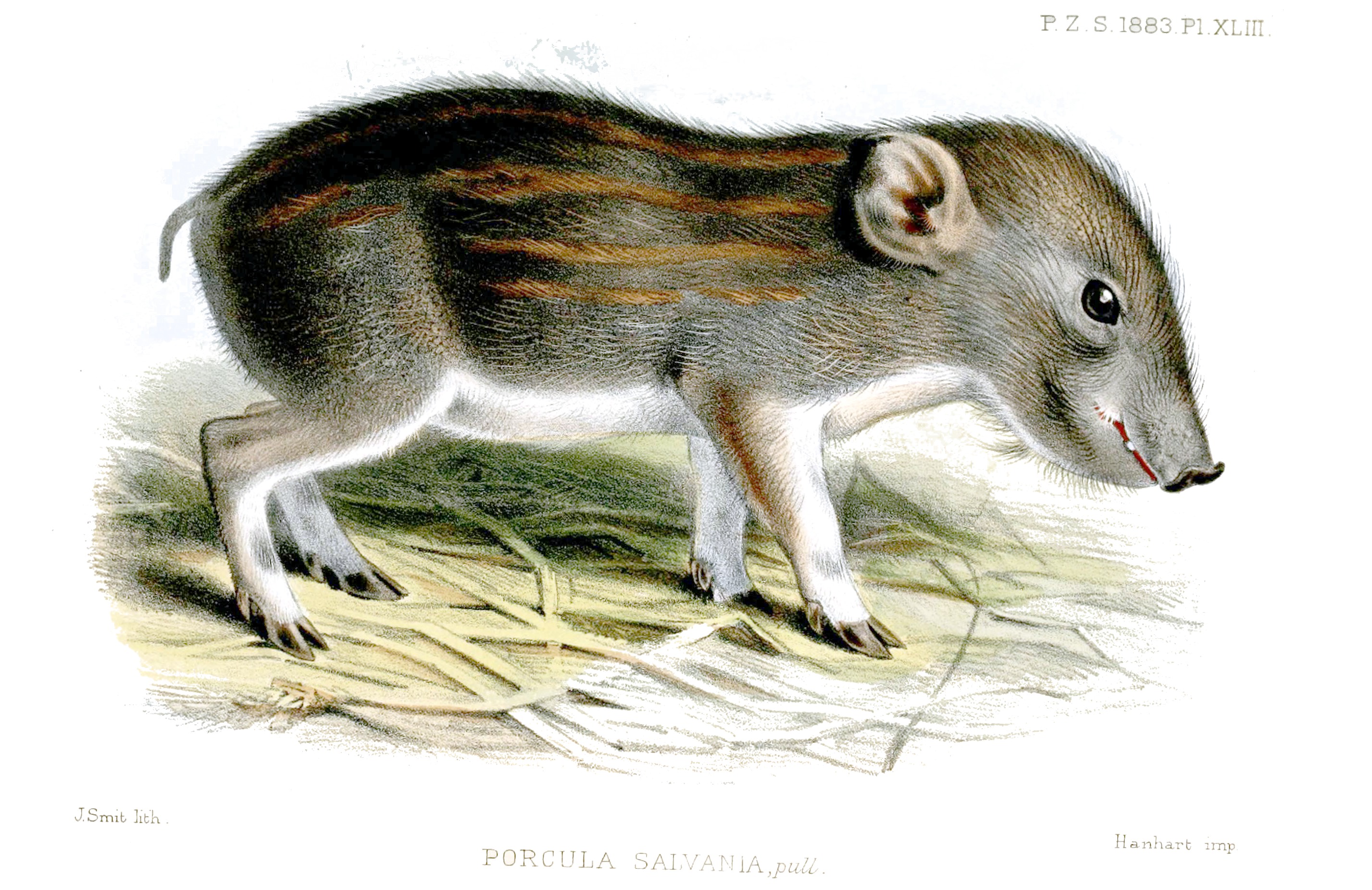I adore Here Comes Honey Boo Boo. That’s right, I said it. There’s a soft spot in my brittle old heart for that whole family, Sugar Bear, Mamma June, and all. Especially Glitzy.

Glitzy, for those of you who don’t know, is a “Teacup” Pig (as you can tell from the video, pigs don’t like to be held). Pigs are cute. Piglets are super cute. Pigs are very intelligent, highly social, and make surprisingly good, house-trainable pets. Unfortunately, 800-lb hogs are not cute. Over the years, various breeders have tried to create pigs that retain all of the adorableness of a piglet without reaching the potential half ton plus mass of a full grown adult hog. Among the most popular “miniature” is the Vietnamese pot-bellied pig, a delightfully spry porcine that tops the scales at a manageable 300 pounds. When legitimate breeders talk about miniature pigs, they’re talking about these 300-lb cuties. Pot-bellied pigs are surprisingly diverse, and, although extremely rare, adults have been reported as small as 20 pounds (most breeders would regard an adult pig that size to be extremely malnourished). This huge size range prompted many breeders to attempt to create even smaller pig breeds, selecting from only the smallest stock. Enter the teacup pig.
A teacup pig (or a micro pig, nano pig, or any of a half dozen variations of “small”) is supposedly a tiny pig breed. Some breeders claim that their pigs only reach up to 30 pounds in weight. Combined with the intelligence and sociability that pigs possess, it would seem that teacup pigs should make a perfect pet. There is only one problem: there’s no such thing as a teacup pig.
To be clear, there are pigs that are unusually small and it is possible to selectively breed smaller and smaller pigs. There can be adult pigs that are truly tiny. Even so there is no currently recognized breed of teacup pigs. The “teacup” classification refers to size, not to a particular breed. Because there is no established “pure” teacup breed, the size of the parent is not a good predictor of the size of the offspring. That size rage of 20 to 300 pounds is a pretty hefty gamble.

There may be a few breeders out there capable of consistently producing very small pigs and I’m not calling out Glitzy’s breeder, Posh Pigs, directly (although you should never buy an animal online, site unseen). Take a look at those prices. Made popular in part by Here Comes Honey Boo Boo, Paris Hilton, and other celebrities who have embraced pigs as pets, the demand for small pigs is on the rise. There are many unscrupulous breeders willing to take advantage of some interesting porcine biology to market standard pot-bellied pigs as teacups.
Although commercial pigs are known for their fast growth and good feed conversion ratio, they don’t reach full adult size until six years. Most production pigs are slaughtered long before then (the best size for a barbecue pig is about 100-lbs), so people rarely see just how big a pig can be. Pot-bellied pigs can become sexually mature after 3 months. At this point, they are relatively small. A new pig enthusiast, attracted to pet pigs from images of teacup pigs frolicking around a living room, could be forgiven if they thought the size of the parents was a decent predictor of the size of their new pet. The most unscrupulous breeders mislead their customers further by advising them to underfeed their pigs, stunting their growth and leaving them permanently malnourished.
These pets can and do get big. Take a look at the growth of Paris Hilton’s teacup pig, Princess Pigelette in less than a year. What started as probably a few week old piglet is still years away from fully grown, and is clearly a Vietnamese pot-bellied pig. I’d hate to see the teacup that little hog fits in.
So what happens to a teacup pig once it reaches full size? Most owners are expecting a pet roughly equivalent to a small dog, not a highly-intelligent, very social, 300 pound pig. The cost of care is often prohibitive, finding vets can be challenging, and many properties are not zoned for livestock, which still includes specialty pig breed. Responsible, though misguided, owners return them to the breeder, but many pet pigs end up abandoned or dumped at local animal shelters. Several teacup pig rescue programs have emerged in the last few years to deal with the teacup pig problem.
How small can a pig get?

You won’t find the world’s smallest pig in a breeder’s pen. You probably won’t find them, at all. Weighing in at a minimum adult weight of 14 pounds, the Pygmy Hog, Porcula salvania, is the world’s smallest pig species. Once distributed throughout India and surrounding regions, the 150 surviving individuals are now restricted to the 950 square kilometer Manas National Park in the Indian state of Assam. Habitat destruction, encroaching farm land, predation, and poaching are the main drivers of their decline. Ongoing political unrest throughout much of the pygmy hogs natural range precluded comprehensive conservation efforts until recently.

Pygmy Hogs are critically endangered. This species is the sole surviving member of its genus; its disappearance would represent a significant loss of Suidae taxonomic diversity. Conservation efforts have improved in the last decade. The Pygmy Hog Conservation Programme (PHCP) successfully reintroduced captive-bred pigs into the wild. Currently, all signs suggests that the 16 reintroduced pigs are reproducing. In a 2011 interview, Dr. Goutam Narayan, lead researcher at the PHCP, discussses the tremendous success of the conservation program, but also the struggle with funding.
If pictures of adorably tiny pigs has you pining for a porcine pal, you might want to consider taking that hefty fee breeder’s charge for a teacup pig and instead contributing it to the Pygmy Hog Conservation Programme through the Durell Conservation Trust. You won’t get a pig of your own, but you’ll be helping with the continued survival of the world’s smallest pig.
For more information about selecting sustainable, environmentally conscientious pets, please see: Is it time for a sustainable pet movement?
Hey Team Ocean! Southern Fried Science is entirely supported by contributions from our readers. Head over to Patreon to help keep our servers running and fund new and novel ocean outreach projects. Even a dollar or two a month will go a long way towards keeping our website online and producing the high-quality marine science and conservation content you love.
Reminds me a lot of the unscrupulous breeding that goes on with pedigree dogs and cats.
Oh, and just a minor quibble: wild boar are native to India, and are naturally sympatric with pygmy hogs. Are there any sources stating that the (still thriving) wild boar populations are competing with or otherwise negatively affecting pygmy hogs?
Fixed, thanks. I may have meant feral domestic pigs, but I can’t find the source, anymore.
They are awfully precious. Unfortunately many people get pets they can’t care for and they abandon them when they are no longer “cute”! Thank goodness parents don’t do that when their offspring are no longer babies but become adolescents!
Excellent post
Do you know the story of Paul Dayton and his pet pig Francis Bacon? Franny was a “Vietnamese pot bellied pig” rescue who turned into a behemoth – I think she was a regular ol’ hog. She was apparently a great pet, until she learned how to open the refrigerator by knocking the entire thing over. After that she went to live out her life on his brother’s farm. But look carefully at some of Dayton’s co-authors…
That is the greatest thing I have ever heard. F. Bacon is the leading porcine expert of Polar Marine Communities.
A lot of good information in this article. Teacup pigs are not for everyone. A person should always check with local animals shelters to see if they can adopt a piglet before purchasing one.
Just an update that the Pygmy Hog Conservation Programme has reached a milestone by releasing 60 captive bred pygmy hogs the wild. This is ten times the number of founders the conservation breeding project was started with. Many thanks for your suggestion for donations and one can help us either through Durrell Wildlife Conservation Trust or by contacting us directly in Assam by writing to phcp@ecosystems.in
That is fantastic news! Thanks for getting in touch and congratulations on all your success!
Thank you for educating!
What a fantastic and educating article. As the director of a 100-acre pig preserve (sanctuary) we have a number of “miniature” pigs here who started life as a teacup pig pet. The vast majority of these so-called teacup pigs are now adults and range anywhere from 120 to well over 300 pounds. Compared to our fully mature farm pigs, who range from 600 to over 1200 pounds, they are truly “miniature: pigs. But potential buyers should not confuse the term “miniature pig” with a small pig. The term “miniature” is relative and is normally used to contrast a smaller breed of pig with a typical commercial pig.
Pig sanctuaries across the US are being inundated with these “teacup pigs” as they quickly outgrow the weight advertised by the unscrupulous breeders. We also are seeing a huge increase in the number and types of birth defects and genetic abnormalities in adult miniature pigs as breeders turn to in-breeding these pigs in an attempt to breed the perfect teacup or micro pig. Sadly, many of these inbred tiny pigs die well before reaching maturity…either from chronic malnutrition from trying to keep them “tiny” to inherited birth defects from inbreeding.
Hi! I represent NAPPA, the North American Potbellied Pig Association. I read your article with great interest, and was wondering if you would give permission for our group to reprint your article in our newsletter. Thank you for covering this topic so thoroughly 🙂
Of course, thanks for asking!